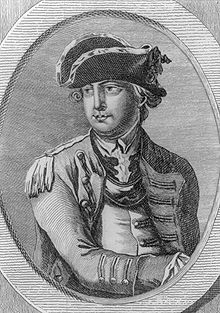
Anything but Greene
Nathanael Green is one of those men that never made the top-tier in the history classes. Having died shortly after the war he never had the chance to take part in the founding or the early years of the republic. Still, he had such a huge impact in the execution of the war, and in his battles with Congress that we owe him a huge debt. He certainly was a Washington acolyte and Washington would always consider Greene one of his best. Even so far as to say that if anything ever happened to him, Greene would be his choice to replace him.
After the fall of Charleston in 1780 and the total defeat of General Gates at Camden later that year, the South looked lost and Washington knew of only one man who could save revolution in that region and he sent him with his prayers and little else.
The Natural
Greene was a natural at war. From the start he had a grasp of strategy that few in the fledgling Continental Army had and this served him well in the South. One example is his desire to know as much about the terrain as possible in the theater. Upon arriving in the region he immediately dispatched men to learn every river, every crossing, every trail and almost every tree and rock to the point where some locals even commented that he knew the area as if he had grown up there.
This knowledge would be invaluable to him during the “Race to the Dan” and would allow the army to stay in one piece. Green dove into the aspects of the guerrilla war in the theater and used it to his advantage, understand when a small strike could gain the same effect as a major battle, but he also knew when the rules could be broken, such as dividing his army when needed.
The Artist
When it comes to operational artistry Greene again showed a natural ability. The main forces in the south fought more of a war of maneuver. Whether it was Greene staying one step ahead of Cornwallis, or Cornwallis trying to catch Green. Both armies stayed constantly on the move.
It could almost be looked at like boxing; Green was against a stronger foe with more reach. He had to keep the army moving. Dancing as it were. Striking blows when he could and being careful to not get caught. Cornwallis knew that all he had to do was pin Greene down to a general engagement. Then the knockout would come. He was constantly outclassed and out maneuvered by Greene. In the classic underdog context, even when the battle was engaged at Guilford Courthouse, the British only won on points, held the field, but had to be helped out of the ring as Greene took the moral victory. In Greene’s own words, “”We fight, get beaten, rise, and fight again.”
The Bane of Cornwallis
So tenacious was Greene that General Cornwallis opted to move his army to Virginia, rather than face Green again. Eventually he would end up under siege in Yorktown and the war was won. Greene continued to fight in South Carolina. Constantly driving the British from the back country. Eventually only Charleston remained under their control. All of this without having won a single battle himself.










